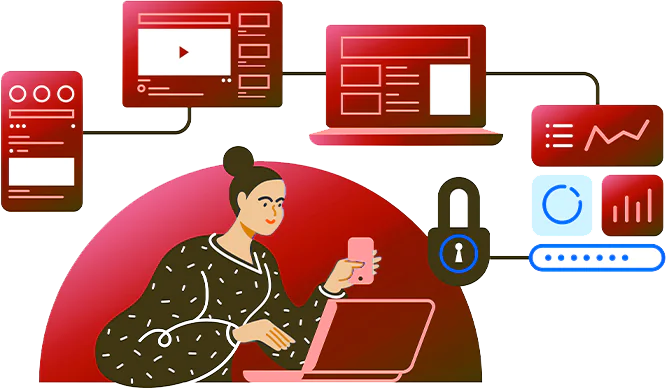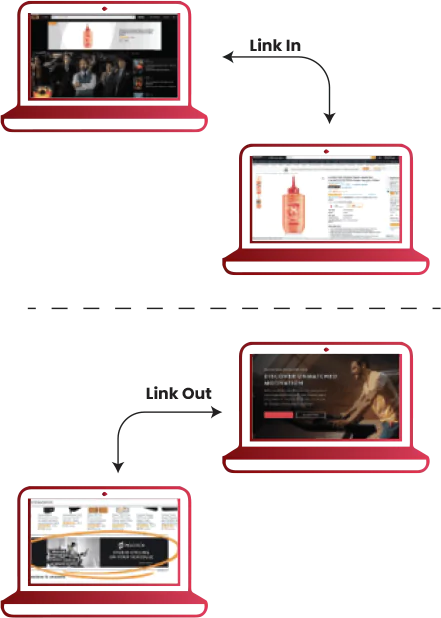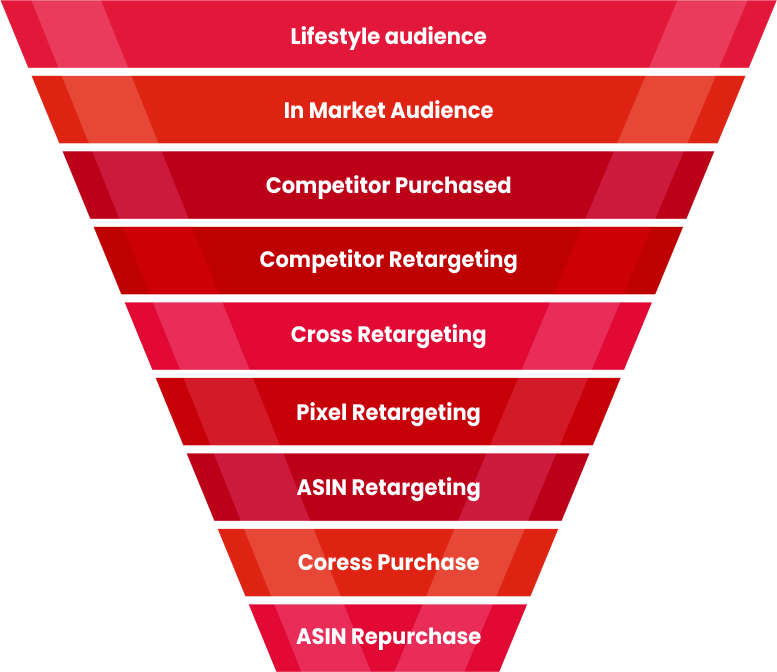Reach Beyond and Target Deep
Experience Unmatched Advertising Power with Amazon DSP
Unlock the full potential of programmatic advertising to propel your brand forward on and off Amazon. With Signalytics, you’re not just investing in advertising; but you are investing in your brand’s exponential growth and visibility.












Amazon’s Demand Side Platform (DSP) offers a powerful opportunity for brands to reach their ideal audiences across Amazon’s vast ecosystem and beyond through display, video, audio, and image ads – diversifying their presence across the web.
What Makes Amazon DSP Advertising
Unique From the Rest?
Advertise On and Off Amazon (Unique Supply Sources)


Exclusive First-Party Data
Link-In and Link-Out Campaigns

DSP Advertising Done Right: Why Signalytics Leads the Industry?
Industry Experts with over 5 years of Experience – From strategic planning to execution, our dedicated team of DSP-certified experts provides you with unwavering support throughout the process.
Amazon Marketing Cloud – By leveraging AMC, we utilize the full potential of advertising data, enabling precise measurement, in-depth analysis, and data-driven optimizations for peak performance.
Full-Funnel Approach – Our strategy encompasses every stage of the customer journey, ensuring cohesive brand messaging and maximized conversion opportunities.
Customized Strategies – We believe every brand is unique. Our personalized approach tailors DSP campaigns to align with your specific goals, audience, and brand identity.

Achieve Your Target ROAS in 4 Steps with Signalytics!




Discovery Call
Understanding your brand, goals, and challenges to tailor a unique DSP strategy.
Strategy Development
Execution & Optimization
Reporting & Insights
Fueling Momentum:
Signalytics’ Amazon DSP Strategy Catapults Home and Kitchen Brand to 239,302 in Sales in RecordTime

Why Signalytics, Straight From Our Customers
Signalytics mastermind events are at….
Signalytics mastermind events are at top of its game. The content that they produce can't be found anywhere else.. Love the parties that they throw and all the speakers that they bring on can't be found anywhere else.. Signalytics is a company that you must try out, if you haven't already.
Date of experience: May 03, 2022
FIVE STARS!
I've used the signalytics team for a few months now with their amazon listing audits and listing creation and they have done a phenomenal job! They really know the Amazon world and how to make sure your listing will convert compared to others.
They did a great job of analyzing all the keywords, images, and content for a new product as well as my current product. I will continue to use them in the future and cannot recommend them more.
Date of experience: November 01, 2022
Pioneering AI tools for amazon sellers
Signalytics is definitely pioneering ai as a tool for amazon sellers. Their service is gonna cost a lot of money when they take off. My favorite is the the bullets generator with minimal prompt input. It allows for instant bullets for hundreds of SKUs in minutes.
Date of experience: January 05, 2023
Game changer
Signalytics has been a total game-changer for our Amazon listings. They helped us bump up our visibility and sales like crazy. Their listing optimization services are top-notch. Definitely recommend them!
Date of experience: October 19, 2022
I’ve used signalytics for their ppc…
I’ve used signalytics for their ppc management. They’ve done a great job in providing a robust ppc strategy that fit my business and niche. Highly recommend for anyone looking to outsource ppc management
Date of experience: January 30, 2023
Have been using the service with…
Have been using the service with "apple" now from there for going on 3 years. Really great. Shes always been there 365 days out of the year and handles the entire process A-Z. Just finished another order with her yesterday.
Date of experience: January 11, 2023
Signalytics.ai and their PPC management will probably get your business skyrocketing.
If you want the bottom line - Signalytics.ai and their PPC management will probably get your business skyrocketing.
But seriously, our experience with Signlaytics was a huge breakthrough for our brand.
They have walked us through everything from scratch even for things that aren't necessarily part of their service.
Thanks to Howard, we have made some great listings, images, and content optimization.
Their team managed to scale our brand while lowering our TACOS using their awesome PPC ai (very comfortable for ads management, way more than the crappy seller central dashboard)
Thank you guys.
Date of experience: April 30, 2022
If you’re looking for the latest and…
If you’re looking for the latest and greatest Amazon related then Signalytics is your best bet. An ear to the ground is essential when it comes to the latest techniques to master the Amazon game. The service literally pays for itself due to being cutting edge in PPC and data analytics.
Date of experience: February 02, 2023
Amazon and PPC Rockstars
Highly recommend them for getting your Amazon store setup and overall PPC campaign management. They will help you scale your products to the moon! I was extremely impressed by how dedicated their team was to strategy and ensuring success. They have scaled so many brands online so it was a no brainer working with them to avoid wasted time. Five star service!
Date of experience: October 07, 2022
They did a great job optimizing my listing!
I was looking to revamp one of my oldest listings and I wanted it done professionally. I did some research and Signalytics came highly recommended. I now know why. They were easy to work with, they were very communicative and the deliverables were perfect! They even gave me a breakdown of my most valuable KW. I am very happy with the outcome and I would definitely recommend them to anyone looking for such services. Thank you!
Date of experience: May 08, 2023
Highly Recommend
Signalytics heat mapping service helped us pinpoint the weak spots on our product pages. This enabled us to make more informed design decisions which ultimately led to increased sales. Highly recommend their service!
Date of experience: March 07, 2023
The best of the best in the industry
Their services they provide are some of the best I've had experienced. The knowledge they provide are definitely things you cannot find online or anywhere else, it is specific to hard earned experience and succuss they have had. They have a unique approach to PPC with ai and strong insight into optimizations and strategy to boost sales. No doubt they are one of the leaders in the ecom field.
Date of experience: February 02, 2023
Signalytics provided a great service…
Signalytics provided a great service for creative design of our products, they have a team of experts that helped us to create an outstanding design that made our product stand out. With their help, we felt more confident with our product design and saw a significant increase in sales. Highly recommend Signalytics for anyone looking to improve their creative design.
Date of experience: March 08, 2023
Trust the expert team
The team is simply outstanding. Their expertise and deep knowledge of the amazon are second to none. They take the time to understand what you need and work tirelessly to ensure that those needs are met. From professional photography to page optimization, to advertising optimization, this team take care everything.
Date of experience: November 21, 2022
Signalytics has been a game-changer for…
Signalytics has been a game-changer for our Amazon product listings. Their listing optimization services have helped us increase visibility and sales. Their team was very knowledgeable and provided clear recommendations on how to improve our listings. With their help, we felt confident and in control of our Amazon strategy. Highly recommend Signalytics for anyone looking to improve their product listings.
Date of experience: November 28, 2022
I'm one of the larger sellers that come to these events. I think I know a lot of things, but nobody knows as much as the Professor.
With Signalytics, I was doing brand management, so this was strictly a brand that I was having issues with. I engaged with Signalytics to get the brand back to what I needed it to be and now we are ranking our BSRs in the 500s.
-Chris Lyell (8-Figures, Amazon Seller)
The beauty of the Signalytics AI tool is that it understands the requirement and deliver the highest ROAS we aimed for, within our available resources.
- Keith Gregory (8- Figures, Amazon Seller)
One of the things that we really like about it (Signalytics) is we know the quality of work can be trusted and honestly it's one of the best turn arounds I have seen in the industry.
- Ace Hemani (8-Figure Amazon Seller)
Want to Give Your
Advertising a DSP Booster?
Let Signalytics Lead the Way
Frequently Asked Questions
What is Amazon DSP, and how does it work?
Who can benefit from using Amazon DSP?
Are there any specific requirements needed to start advertising with Amazon DSP?
Does Signalytics provide self-service DSP management?
How does Amazon DSP advertising compare to other advertising platforms?
Ready to get started?
Let's Discover Ways to Support Your Goal!
Give us a call or drop by anytime, we endeavour to answer all enquiries within 24 hours on business days.
